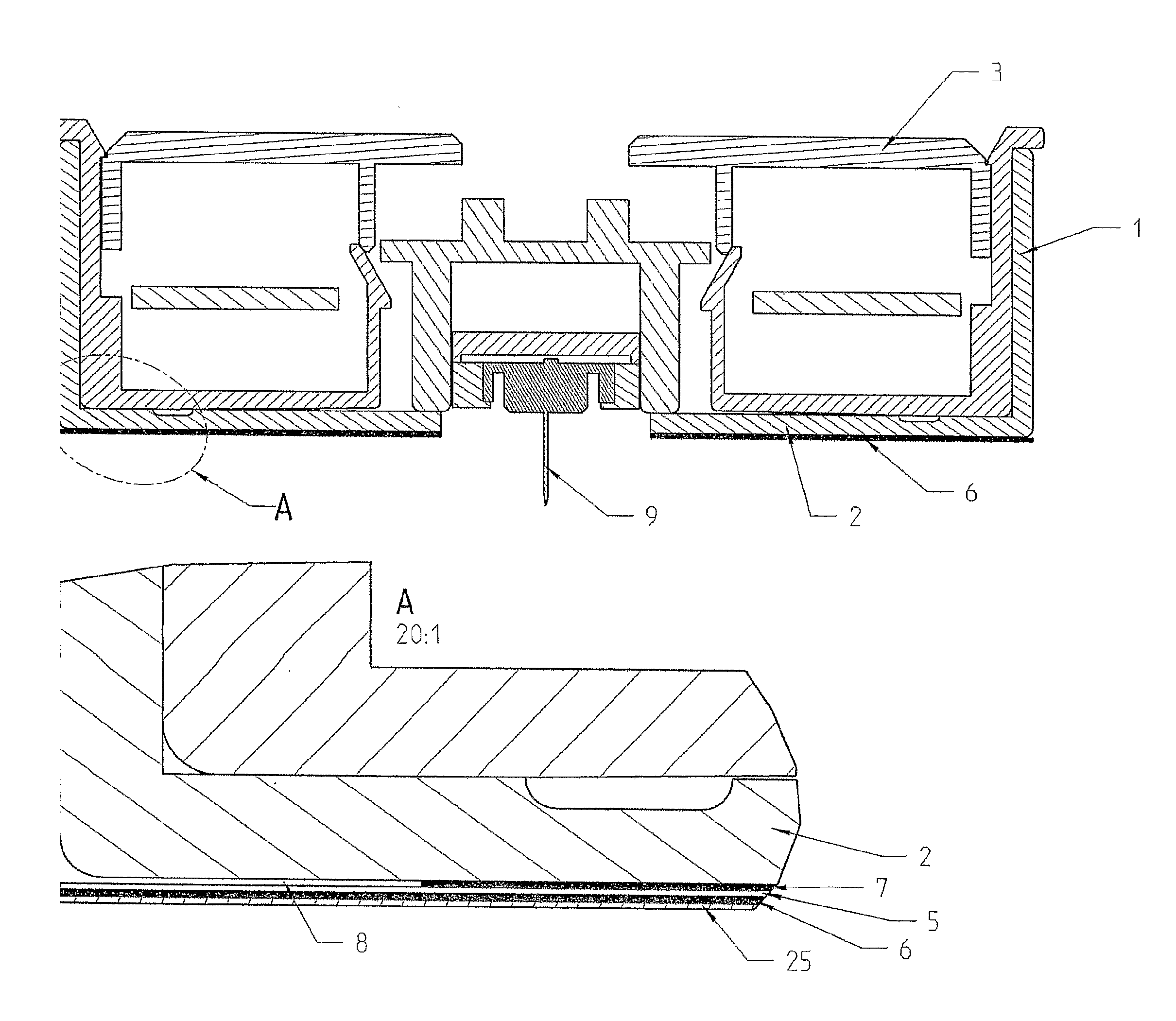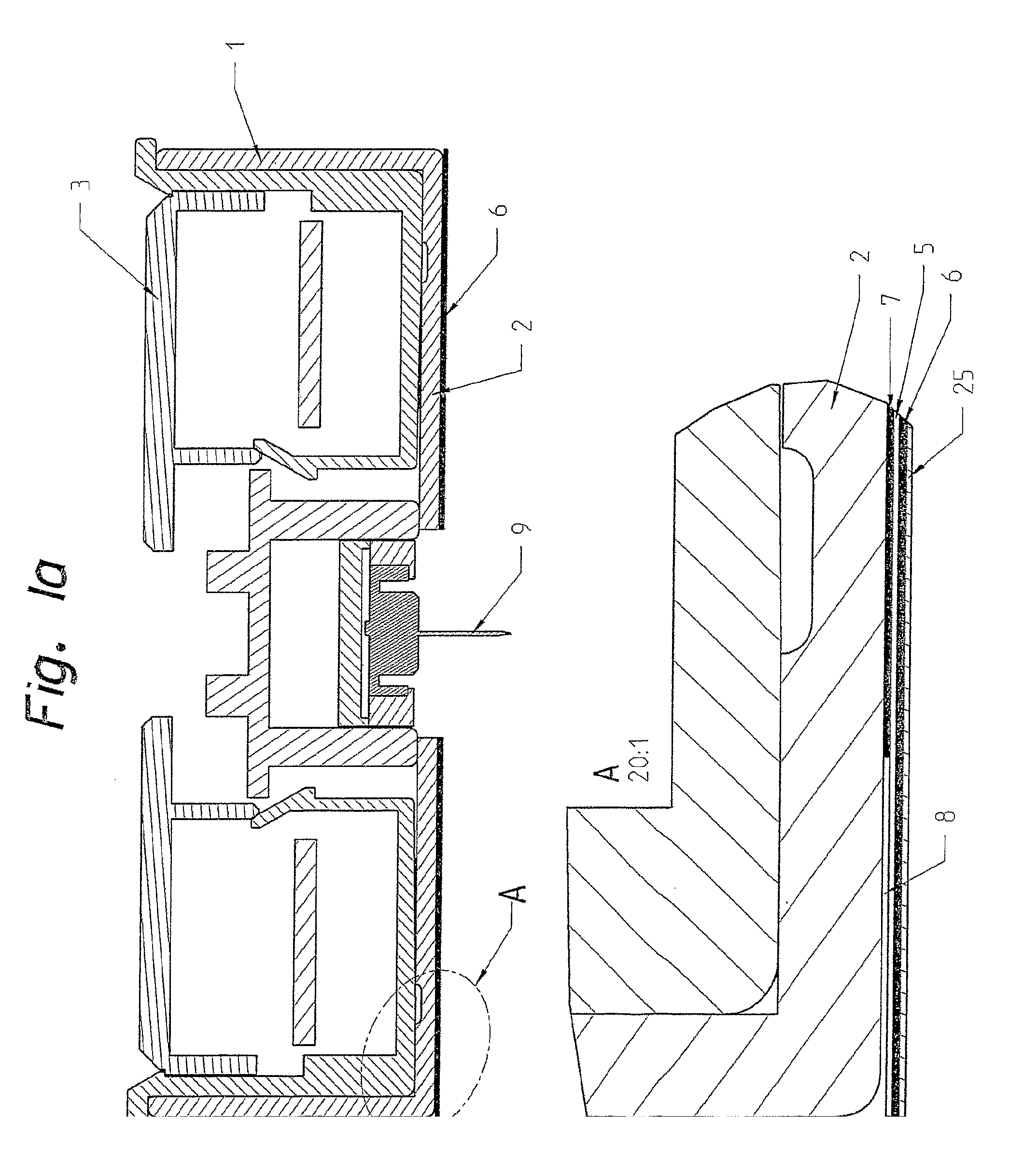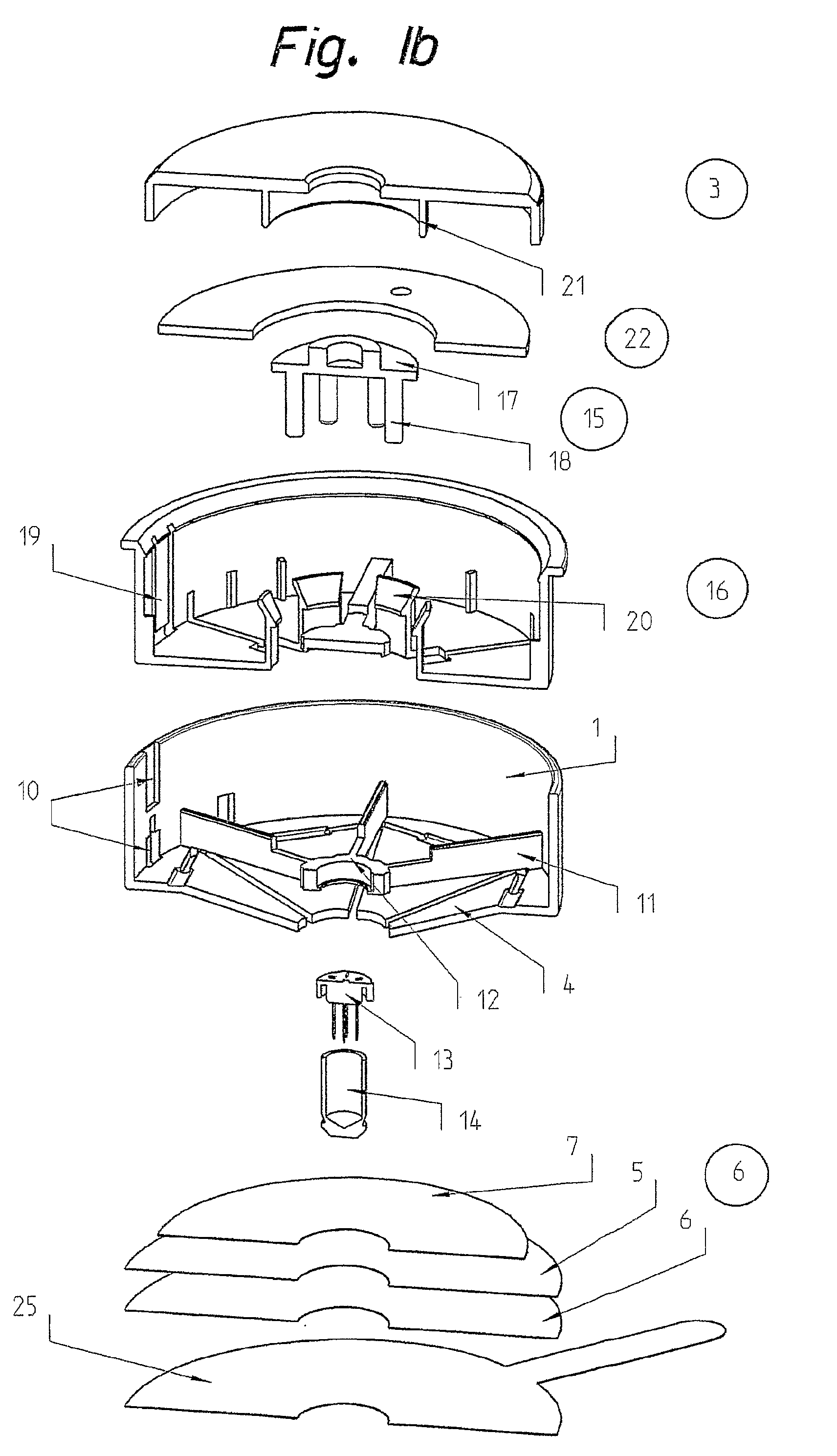Dermally Affixed Sensor Device
a sensor device and dermally affixed technology, applied in the field of analytical devices and methods, can solve the problems of high reliability, minimal invasiveness, painless, etc., and achieve the effect of improving clarity
- Summary
- Abstract
- Description
- Claims
- Application Information
AI Technical Summary
Benefits of technology
Problems solved by technology
Method used
Image
Examples
example 1
Device for Measurement of the Concentration of Glucose in Subcutaneous Interstitial Fluid over 1 to 3 Days
[0051]The device according to the preferred embodiment as described above was equipped with an array of seven implantable electrodes of 150 μm diameter and 4 mm implantable length. The arrangement of the electrode array is shown in FIG. 5. Four electrodes were coated with a glucose sensing layer, as described below, two at an injection depth of 3.0 mm 47 and two of 2.0 mm 48. Two electrodes served as Ag / AgCl reference 49 and the central electrode was a Pt counter-electrode 50. This arrangement results in several advantages as compared to implantable sensors described in prior art which all contribute to superior reliability concerning the accuracy of the glucose level determined. The well defined geometric arrangement of the implanted electrodes allows to separate sensing electrode and counter-electrode as different pins and allows therewith to optimize by miniaturization for mi...
example 2
Inulin Clearance to Assess Renal Function
[0056]As an example, the use of antibiotics can largely be improved esp. in life-threatening conditions by dose-adjustment according to renal function. Success of treatment in severe nosocomial infections is often a question of finding the optimal individualized dosage resulting in high enough plasma levels over sufficient time to kill the pathogens (time over MIC). On the other hand, severe dose-dependent side effects can result due to over-dosage. The severity of the clinical condition and the use of several antibiotics and other drugs in parallel make the choice of the optimal dosage even more problematic. The results of a recent trial of the University of Milan (F. Scaglione, 8th ISAP Symposium, 2002) demonstrated that adjustment of antibiotic treatment in such a condition according to renal clearance could halve the failure rate and of the mortalities (from 10% to 5%) and shorten the length of hospitalization by one third. There are no c...
example 3
Pharmacokinetics of Drugs to Guide Choice of Best Treatment Alternative and Dosing Schedule.
[0062]Adverse drug reactions were conservatively estimated to account for as many as 2.2 million hospital events, and as many as 100,000 deaths a year in the US alone (Pomeranz, JAMA 1998; 279: 1216-1217). An important cause of such adverse drug reactions is caused by inadequate individual dosing due to large variations in the pharmacokinetics of the drugs in different individuals. The reasons for such variations are partly the genetic makeup but also environmental factors, the general condition and concomitant drug treatments of a patient play an important role. For many drugs such unpredictable variations even among normal individuals result in standard deviation in the values observed for the main pharmacokinetic descriptors F, CL and Vss of about 20%, 50% and 30% respectively. This means that 95% of the time the plasma concentration that is achieved with a standard dose will be between 35...
PUM
 Login to view more
Login to view more Abstract
Description
Claims
Application Information
 Login to view more
Login to view more - R&D Engineer
- R&D Manager
- IP Professional
- Industry Leading Data Capabilities
- Powerful AI technology
- Patent DNA Extraction
Browse by: Latest US Patents, China's latest patents, Technical Efficacy Thesaurus, Application Domain, Technology Topic.
© 2024 PatSnap. All rights reserved.Legal|Privacy policy|Modern Slavery Act Transparency Statement|Sitemap



